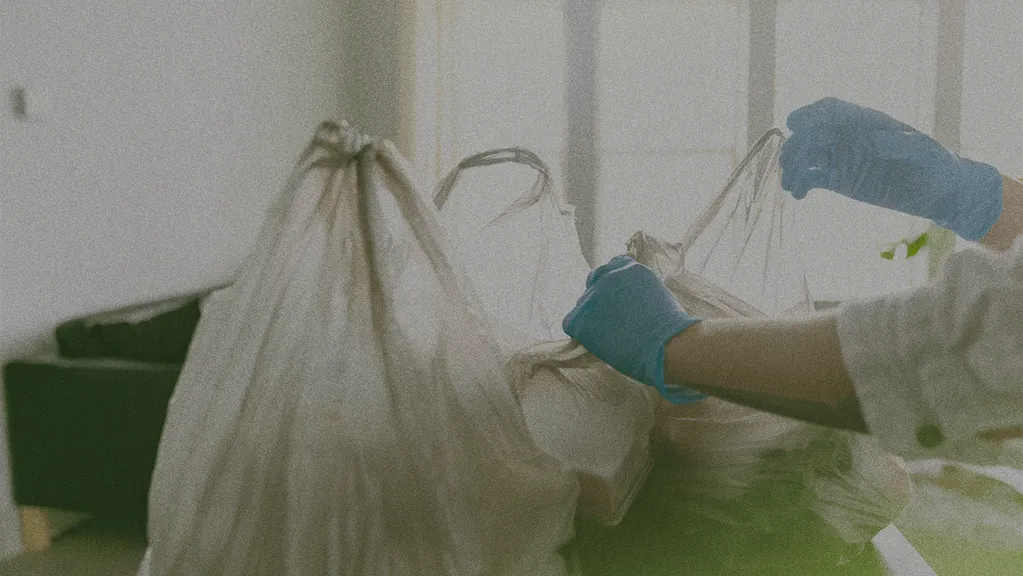BLOG
Alliance Disposal Becomes Sourgum Waste
Read more

Disposing of everyday household items isn’t always straightforward. Many are made from mixed materials, making it difficult to know the proper way to discard them. For example, have you ever thrown away a pile of grocery bags or tossed a burned-out lightbulb in the trash without thinking twice? It may seem harmless, but small habits like these can have a big impact. They contribute to pollution, disrupt recycling systems, and can result in fines in some areas.
If you’re unsure how to properly dispose of everyday household waste, this guide can help. It breaks down which materials require special handling and explains where to take them for safe, environmentally responsible disposal.
For large cleanouts, moving projects, or when you need to get rid of multiple household items at once, renting a roll-off dumpster is the most efficient option. Instead of making several trips to donation centers, recycling facilities, or collection sites, you can load everything into one container and have it picked up.
With Sourgum, renting a dumpster is simple and affordable with transparent pricing, flexible rental periods, and various dumpster sizes. Our team directs as much material as possible to recycling facilities, ensuring waste is managed responsibly and sustainably. Simply order online or by phone at (732) 366-9355, choose your schedule, and fill the dumpster. We handle the rest.
Recycling is good for the planet, but it’s important to understand the true extent of its impact. In the United States, recycling and composting have kept more than 32% of household waste out of landfills. Properly handling everyday items, such as plastic containers, glass bottles, furniture, and small appliances, is a major part of this effort.
How we choose to dispose of these household products directly shapes how much waste is diverted from landfills and how many resources can be recovered for reuse. The following are some of the most common household items and how to get rid of them responsibly:
Plastic is everywhere, but most of it does not get recycled. Plastic bags are frequently thrown away, even though they should be recycled at appropriate drop-off locations.
While bottles, jugs, and certain containers can be placed in curbside bins, many everyday plastic items—such as chip bags, plastic film, and polystyrene—pose challenges for recycling facilities. They can jam sorting equipment and contaminate otherwise recyclable loads. The good news is there are drop-off points for many of these items.
Most grocery stores have collection bins at the entrance for plastic shopping bags and film, and some retailers accept packaging materials like bubble wrap. Polystyrene (Styrofoam) usually can’t go in curbside bins, but specialized recycling centers will take it if you drop it off. To find locations near you, local county waste websites or national tools such as Earth911’s recycling locator are great resources.
Mattresses can be difficult to recycle due to their size and the combination of materials they contain, including metal springs, foam, and fabric. Leaving them on the curb is often prohibited and can result in fines in many areas. Therefore, the best thing to do with mattresses is to take them to a recycling program or collection site where the different materials can be separated and reused. The metal springs can be pulled out and sent to scrap yards, the foam can be processed into carpet padding or insulation, and the fabric can be repurposed for industrial uses.
Many states now have mattress recycling programs that make drop-off easy, and some retailers even include removal and recycling when you buy a new mattress. If recycling isn’t an option in your area, consider donating a mattress that’s still in good condition.
Old TVs, computers, and phones contain metals, such as copper, aluminum, and even small amounts of gold, but they may also contain dangerous substances such as lead and mercury. That's why it's essential to dispose of them via e-waste recycling programs. Throwing electronics in the trash can release harmful toxins into the environment and results in losing valuable, recoverable materials.
Globally, less than 25% of e-waste is recycled, with the majority ending up in landfills or being incinerated. This is partly because electronics are built with tightly connected parts that are hard to separate, and recycling them requires specialized equipment. The best method is to bring old electronics to certified e-waste recyclers or collection events where the devices can be safely taken apart and the materials properly recovered.
Similar to e-waste, appliances contain valuable metals and electronic components that can be recovered, along with materials that need careful handling. A refrigerator, for example, may have copper wiring and steel parts that are worth recycling, but it can also hold refrigerants that are harmful if released into the air. Even smaller appliances, such as microwaves, toasters, and blenders, are built with circuits, wiring, and mixed materials that don’t belong in the trash.
The best way to dispose of appliances depends on their size. Small items are commonly accepted at e-waste drop-off centers or community collection events, while large appliances can usually be scheduled for pickup through a municipal program or the retailer delivering your replacement. Scrap yards also take many appliances and may even pay for the metal content. If an appliance still works, donating it is always better than sending it to the landfill.
Tires should always be recycled, and most local auto shops will take them when you buy new ones. In some areas, cities also hold bulk collection events where residents can drop them off. Tires are banned from most landfills because they can trap gases and damage landfill liners if they burst, so they should never be thrown in the trash or into a dumpster.
Paints, cleaners, batteries, and motor oil often contain chemicals that can be flammable, corrosive, or toxic, which makes them unsafe to toss in the trash. Pouring them down the drain or dumping them outside is just as dangerous, as they can contaminate soil and water.
The safest approach is to use them up whenever possible. Any leftover material should be kept in its original container, and different products should never be mixed together. Before disposing of this type of waste, locate the nearest waste disposal facility and confirm which materials they accept.
Sourgum provides reliable service at the best price, with a commitment to sustainability. We divert waste from landfills and plant a tree for every order.
